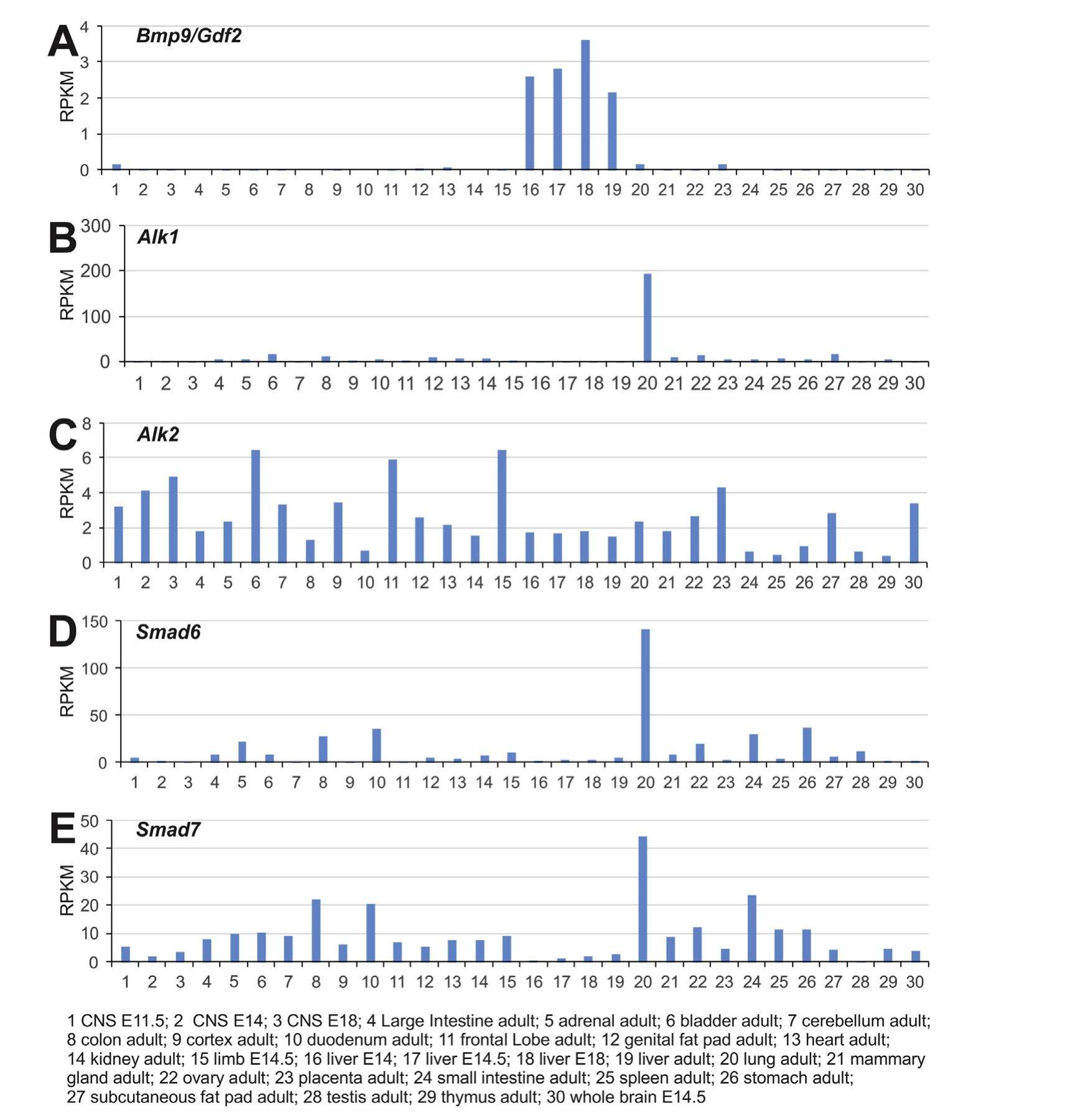
Highly expressed BMP9/GDF2 in postnatal mouse liver and lungs may account for its pleiotropic effects on stem cell differentiation, angiogenesis, tumor growth and metabolism


Bone morphogenetic protein 9 (BMP9) (or GDF2) was originally identified from fetal mouse liver cDNA libraries. Emerging evidence indicates BMP9 exerts diverse and pleiotropic functions during postnatal development and in maintaining tissue homeostasis. However, the expression landscape of BMP9 signaling during development and/or in adult tissues remains to be analyzed. Here, we conducted a comprehensive analysis of the expression landscape of BMP9 and its signaling mediators in postnatal mice. By analyzing mouse ENCODE transcriptome datasets we found Bmp9 was highly expressed in the liver and detectable in embryonic brain, adult lungs and adult placenta. We next conducted a comprehensive qPCR analysis of RNAs isolated from major mouse tissues/organs at various ages. We found that Bmp9 was highly expressed in the liver and lung tissues of young adult mice, but decreased in older mice. Interestingly, Bmp9 was only expressed at low to modest levels in developing bones. BMP9-associated TGFβ/BMPR type I receptor Alk1 was highly expressed in the adult lungs. Furthermore, the feedback inhibitor Smads Smad6 and Smad7 were widely expressed in mouse postnatal tissues. However, the BMP signaling antagonist noggin was highly expressed in fat and heart in the older age groups, as well as in kidney, liver and lungs in a biphasic fashion. Thus, our findings indicate that the circulating BMP9 produced in liver and lungs may account for its pleiotropic effects on postnatal tissues/organs although possible roles of BMP9 signaling in liver and lungs remain to be fully understood.
